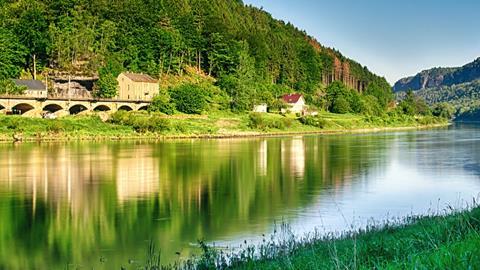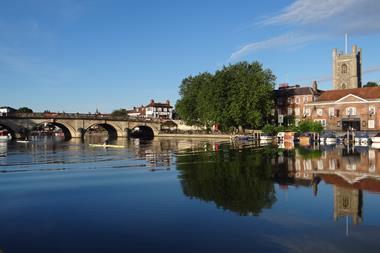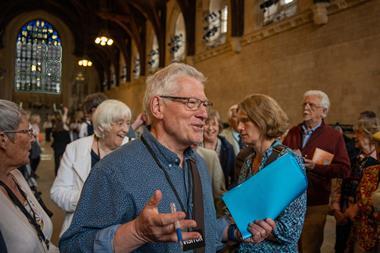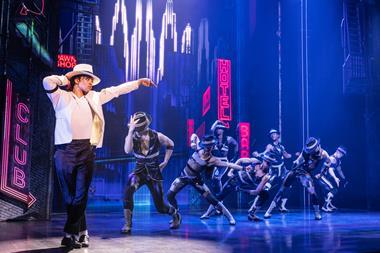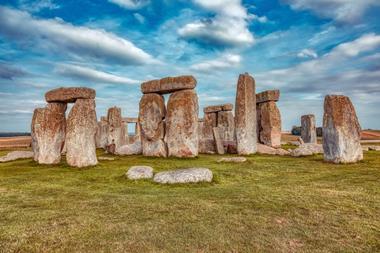Over eight nights, Jeannine Williamson uncovers the best bits of the Elbe River onboard the Elbe Princesse with CroisiEurope.
As we stand on the viewing point outside Konigstein, one of Europe’s highest fortresses, we have our eyes on the spectacular view and our ears tuned into the guide as she reveals stories of lavish parties thrown by Augustus the Strong, the 17th century King of Poland and Elector of Saxony.
Not only did he commission an immense 250,000-litre wine barrel to ensure his bar never ran dry, but he measured the success of his social gatherings by weighing guests when they arrived and left. If they hadn’t put on weight they were blacklisted from future revelries. I think to myself that if CroisiEurope did the same we would definitely all be invited back.
We listen to more colourful tales about the history of the mighty castle - an impregnable bastion designed to allow a 1,000-strong community to live self-sufficiently for up to four years - before a member of the group points to the Elbe River, nearly 800ft below. On the bend that winds around the foot of the sheer rock face the Elbe Princesse, our floating home, glides past to collect us further downstream.
We get a bird’s eye view of the rear paddlewheel creating a wake as it turns through the silvery strip of water. The sight is even more remarkable as it is the only river vessel we’ve seen since setting sail earlier in the week. We only spot another right at the end of our cruise, and until then share the river with working barges.
Although the Elbe is one of Germany’s most economically important waterways, with the country’s largest port of Hamburg situated 68 miles from its mouth at the North Sea, it remains pretty much off the river cruising radar. This is because low water levels make it notoriously difficult to navigate and as a result most river cruise lines give it a very wide berth, in every sense.

Pictured: The Elbe Princesse at sunset by Berlin Tegel Pier.
However, in 2016 CroisiEurope came up with a novel solution when it launched the 80-passenger Elbe Princesse, a modern paddlewheel vessel with a low draft to cope with the shallow river. It has proved such a success that a sister vessel, Elbe Princesse II, was launched this April. For any groups that have enjoyed a trip on Europe’s busier rivers, such as the Rhine and Danube, the Elbe provides a very different experience.
Rising in the Czech Republic’s Krkonose Mountains, and meandering through tranquil open landscapes with cattle grazing on the banks, the Elbe might not boast fairy-tale castles but it is steeped in interest. The necklace of towns and cities lining its banks played a pivotal role in Germany history, and the contrasting capitals of Prague and Berlin that bookend the 380-mile cruise complete a fascinating voyage through times past and present.
Our journey began in Prague where a generous two-night stay at a mooring spot close to the city centre provided plenty of time to discover sights such as the world’s largest ancient castle which dominates the skyline. The birthplace of composers such as Dvorak and Janacek, the sound of music spills out of halls and rehearsal rooms throughout the city. GTOs can easily book tickets to take in a concert, such as a performance by members of the Czech Philharmonic Orchestra, for a fraction of the price it would cost at home.
Unlike many river cruise lines, CroisiEurope doesn’t include shore tours in the fare which helps keep down costs and enables group members to dip in and out of excursions as they please, providing the additional option to stroll around independently.
From Prague we sailed along the Vltava, a tributary of the Elbe, to join the main river. Home of the first pilsner, the Czechs are the world’s biggest beer drinkers and some of us boosted that statistic on the first excursion to the tenth century Litomerice, one of the oldest Bohemian cities. Sitting in the Labut micro-brewery’s snug cellar we sipped generous samples of three very different beers, served with snacks, and quickly learned how to say cheers - na zdravi!
The next day we sailed into Germany and the rugged area known as Saxon Switzerland, named after its resemblance to the mountainous alpine country, but minus the height. It was here that we headed to the Konigstein fortress.
Ensuing days brought Dresden, where the landmark Frauenkirche cathedral, painstakingly rebuilt and finally reopened in 2005, is a poignant symbol of the World War Two bombing that reduced the city to rubble. It’s worth climbing to the top of the 220ft tower for panoramic views over the cityscape and river.
In Meissen we admired the world-famous porcelain of the same name and posed - very carefully - next to a giant urn for a group photo. In addition to the ornate and very valuable dinner services and figurines on show in the museum it was fun to see a very posh Meissen chamber pot and an organ with porcelain pipes. Another day heralded Wittenberg, where Martin Luther triggered the protestant reformation just over 500 years ago by nailing his 95 theses to the church door.
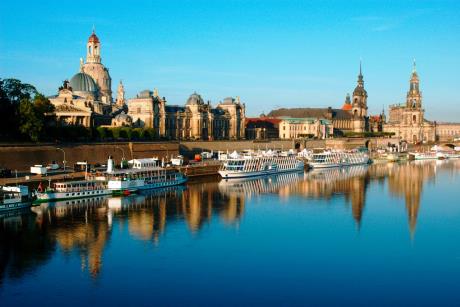
Pictured: Dresden’s waterfront.
Back on the ship our days were punctuated by mealtimes, and being a French-owned line food is taken very seriously. Buffet breakfast, including freshly baked baguettes on all the tables, was followed by the leisurely institution of a four-course lunch and then dinner. An excellent choice of complimentary wine, not just confined to the norm of one white and one red, is served with meals and fares include an open bar. No wonder there was such a convivial onboard atmosphere – our waistlines gradually expanded in a manner that would have pleased Augustus the Strong!
In Berlin we had the chance to try and walk off some of it when we moored in a delightful spot next to Lake Tegel, Germany’s second largest lake. Strolling along the waterfront we came across the familiar sights of a red telephone box and pillar box alongside a Greenwich street sign. We later discovered that in 1965, when the area was still part of Western Germany, it was twinned with the London borough when both were building new social housing on once swampy marshlands.
It was yet another surprise and an interesting discovery on a river cruise that provides a more unusual take on Europe.
How to book
CroisiEurope offers the eight-night Elbe & Vltava Rivers itinerary from Prague to Berlin, or in reverse, from April to October. Fares include all on board meals, wine, beer and soft drinks with lunch and dinner and an open bar (excluding a small number of premium brands). Shore excursions can be booked individually or as a package.
Contacts:
CroisiEurope:
0208-328 1281
www.croisieurope.co.uk
(Photo credits: German National Tourist Office).




